Webbed Feet - Definition, Examples, Quiz, FAQ, Trivia
Discover how animals use this special adaptation for swimming
What are Webbed Feet?
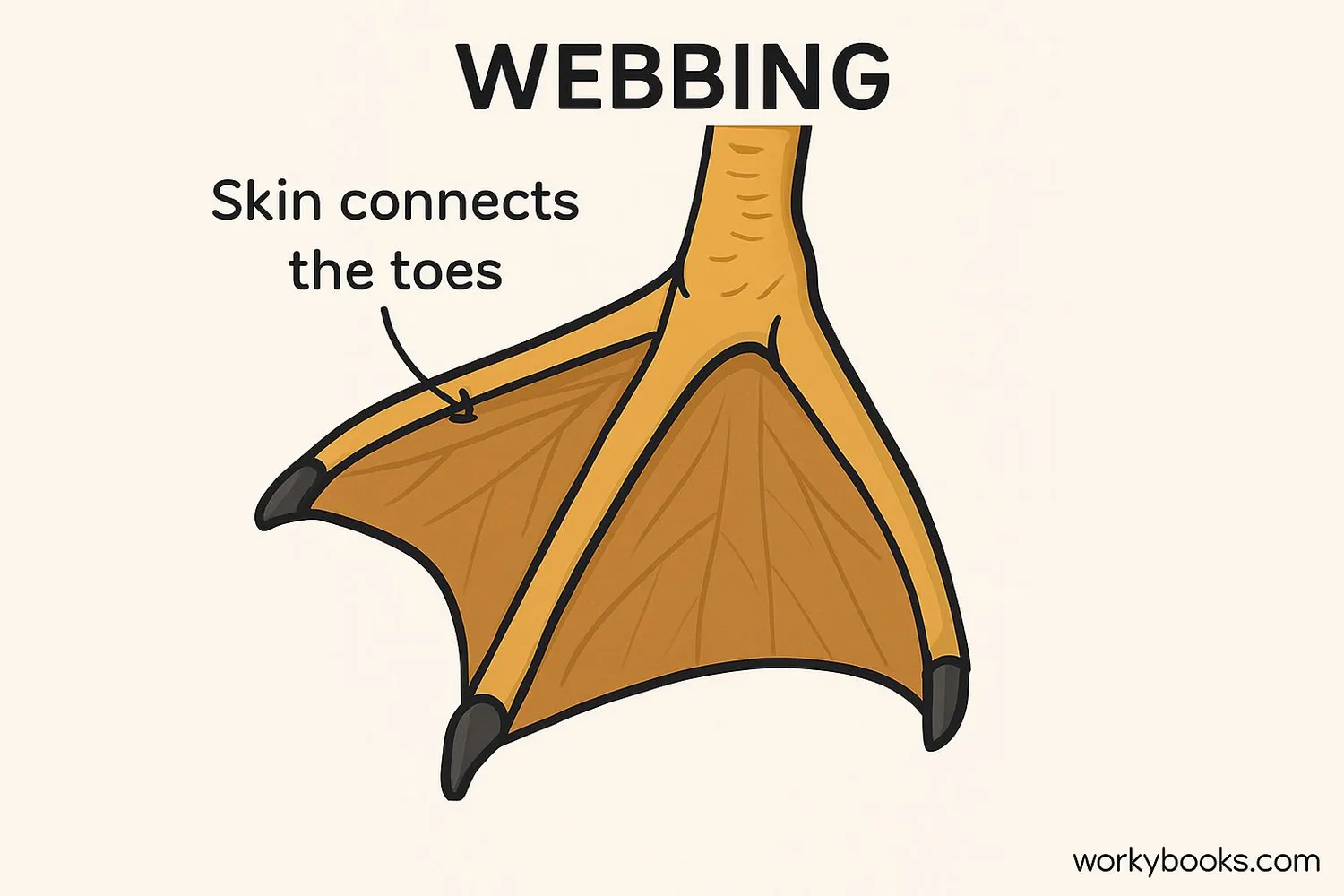
Webbed feet are a special adaptation where the toes of an animal are connected by a thin layer of skin or membrane. This creates a paddle-like shape that helps animals move efficiently through water.
Think of webbed feet like natural flippers! Just as swimmers use flippers to push more water with each kick, animals with webbed feet can push against water more effectively. This adaptation is especially helpful for animals that spend much of their time swimming.
Did You Know?
Not all webbed feet are the same! Ducks have fully webbed feet, while animals like gulls have partially webbed feet.
How Webbed Feet Help with Swimming
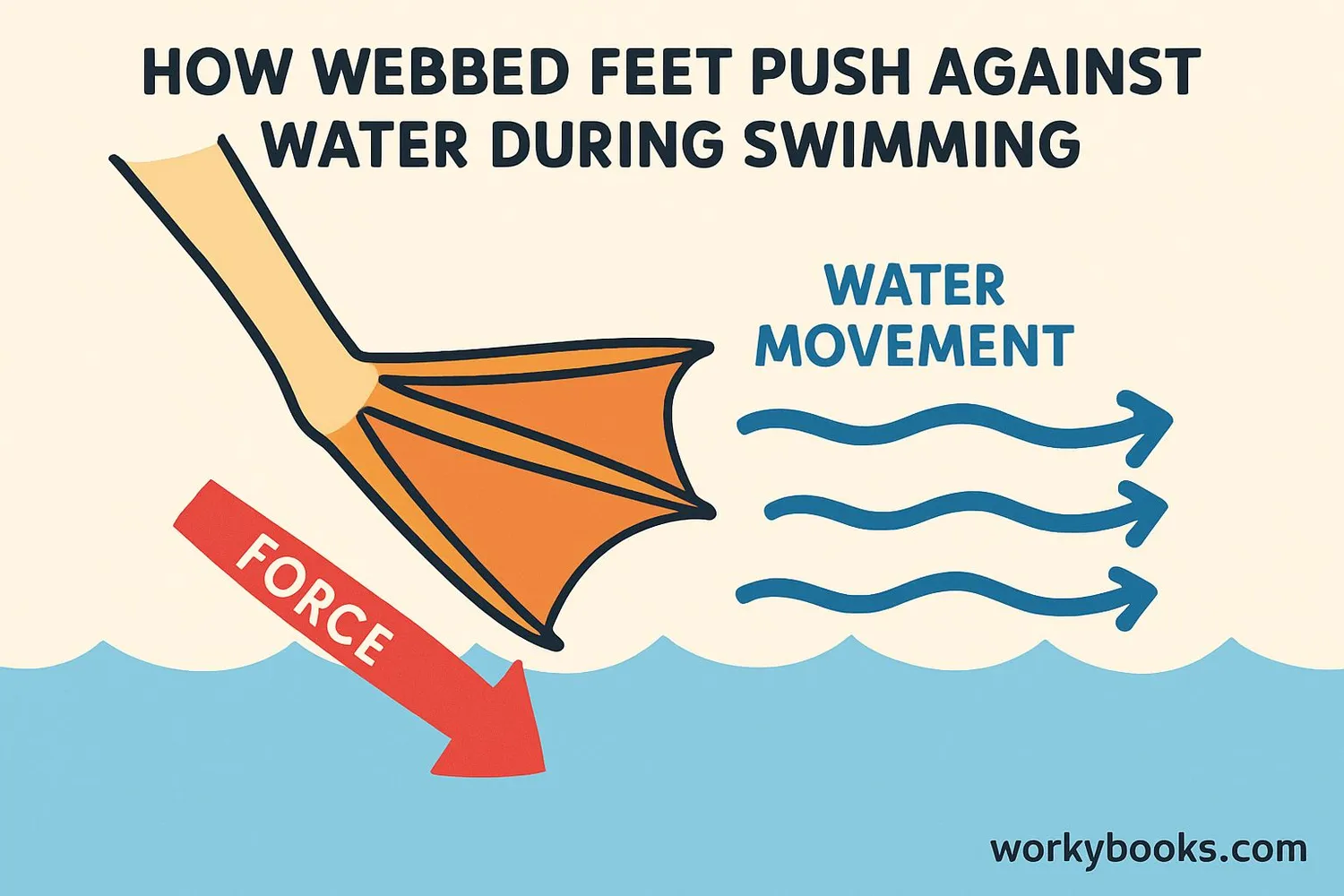
Webbed feet work like paddles to help animals swim efficiently. Here's how they help:
Surface Area
Webbing increases the surface area of the foot, creating a larger paddle
Powerful Push
More water is pushed with each kick, creating stronger propulsion
Direction Control
Animals can steer better by angling their feet
Energy Saving
More efficient swimming means less energy used
Speed & Agility
Faster movement and quick turns in water
When an animal pushes its foot backward in water, the webbing spreads out to create maximum surface area. This pushes more water, moving the animal forward. When bringing the foot forward for the next kick, the webbing folds, reducing resistance and making movement more efficient.
Animals With Webbed Feet
Many different types of animals have evolved webbed feet. Here are some examples:
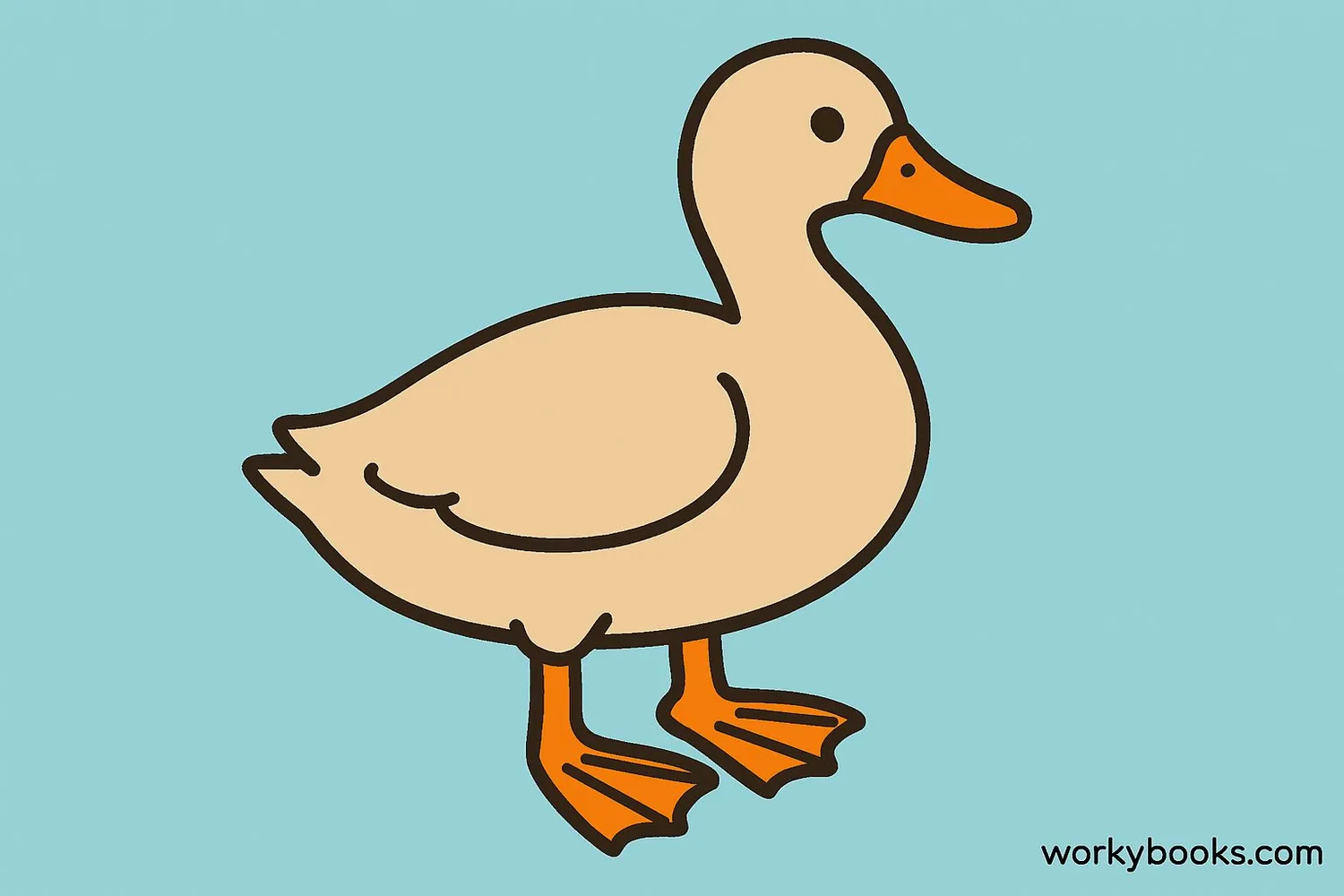
Ducks
Fully webbed feet make ducks excellent swimmers and divers
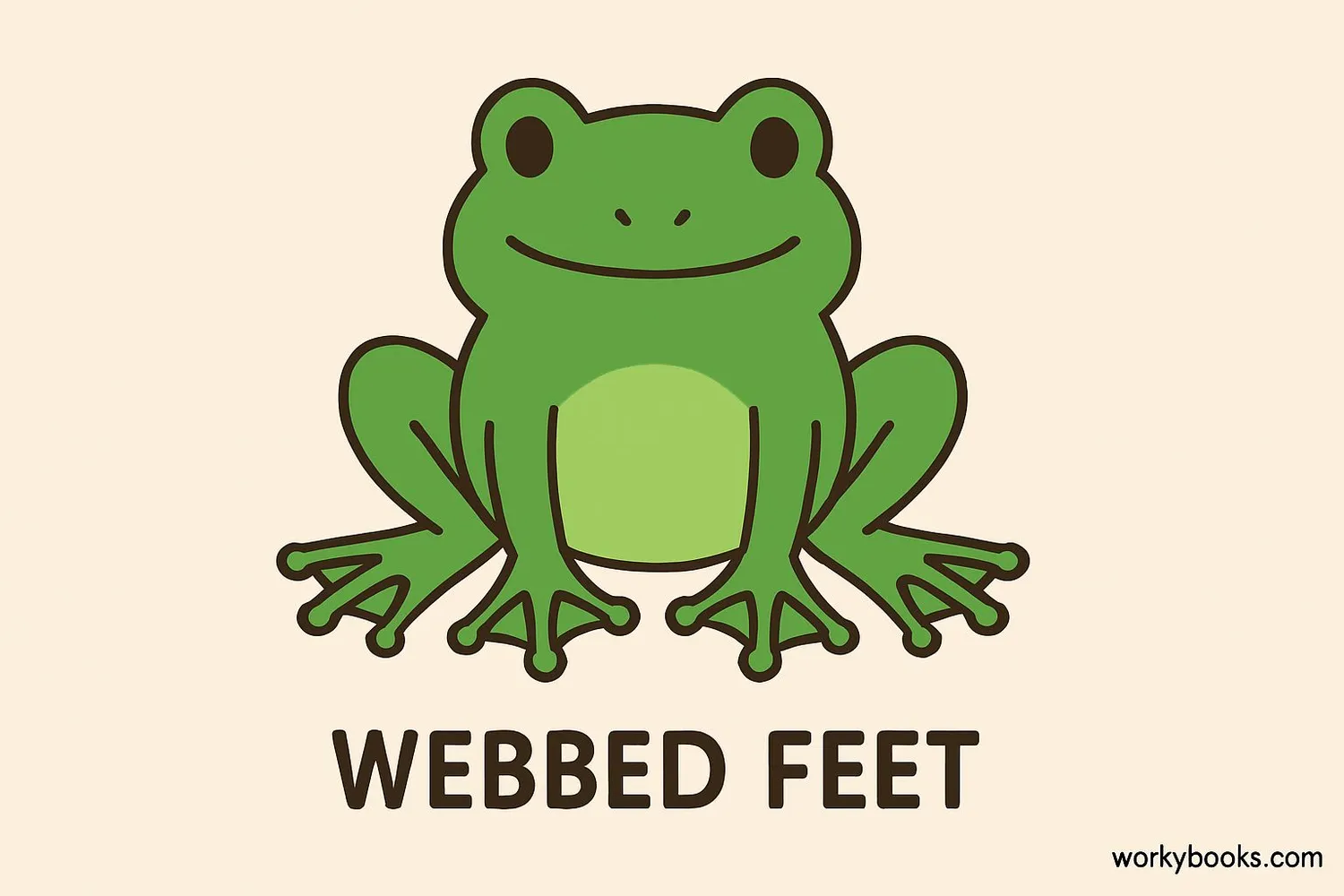
Frogs
Webbed hind feet help frogs swim powerfully
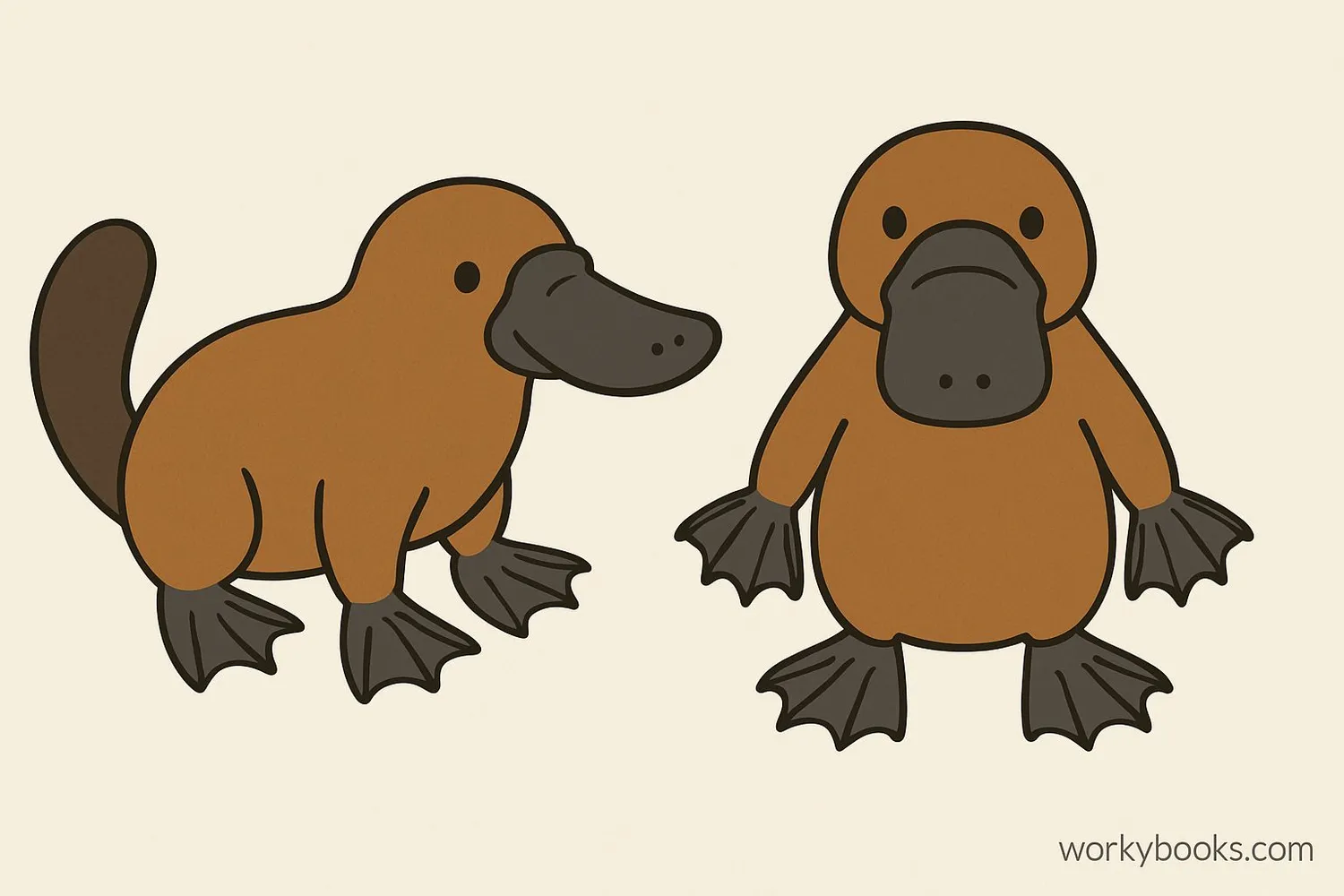
Platypus
Webbed feet with retractable claws for swimming and digging

Otters
Webbed feet make otters agile swimmers who can catch fish
Other animals with webbed feet include:
• Geese and swans
• Seagulls and pelicans
• Beavers
• Penguins
• Sea turtles
• Flamingos (partially webbed)
• Some dog breeds like Labradors and Newfoundlands
Adaptation & Evolution

Webbed feet are an evolutionary adaptation - a physical change that helps animals survive in their environment. Here's how this adaptation developed:
Natural Variation
Some animals had slightly more skin between toes
Advantage in Water
These animals swam better and found more food
Survival & Reproduction
They survived longer and had more offspring
Over many generations, the webbing became more developed in water-dwelling animals. This process is called natural selection. Animals that spent more time in water developed more extensive webbing, while those that lived on land retained less webbing.
Some interesting evolutionary facts:
• Ducks and geese have fully webbed feet (palmate)
• Gulls and terns have semi-webbed feet (semipalmate)
• Frogs have webbing only on their hind feet
• The platypus has webbing that extends beyond its claws
Webbed Feet Knowledge Quiz
Test what you've learned about webbed feet with this quiz! Answer all 5 questions to see how much you know.
Frequently Asked Questions
Here are answers to common questions about webbed feet:
Webbed Feet Trivia
Discover some amazing facts about webbed feet!
Speed Champions
Ducks can swim up to 6 mph with their webbed feet, while penguins can reach 22 mph - faster than many Olympic swimmers!
Ancient Adaptation
Webbed feet evolved independently in different animal groups. Ducks and frogs developed webbing separately through convergent evolution!
Human Inspiration
Swim fins used by humans were inspired by webbed feet! Inventor Benjamin Franklin created early swimming paddles based on animal anatomy.
Multi-purpose Feet
Otters use their webbed feet not just for swimming, but also as tools for cracking open shellfish and as "napkins" to clean their faces after eating!


